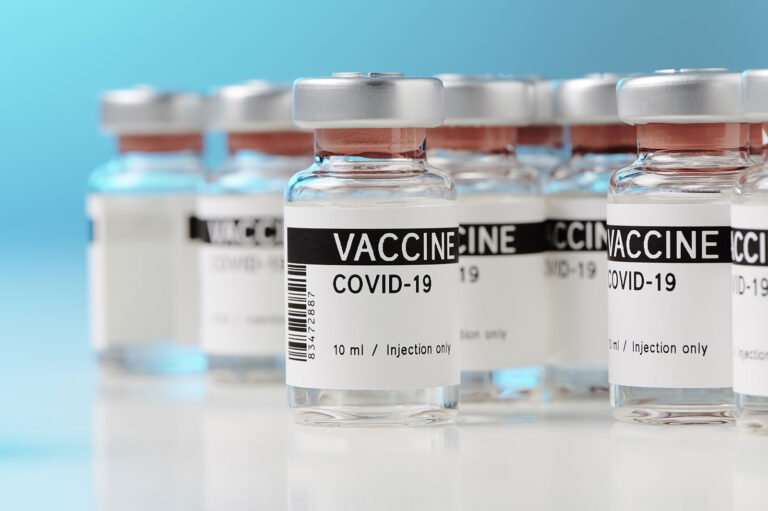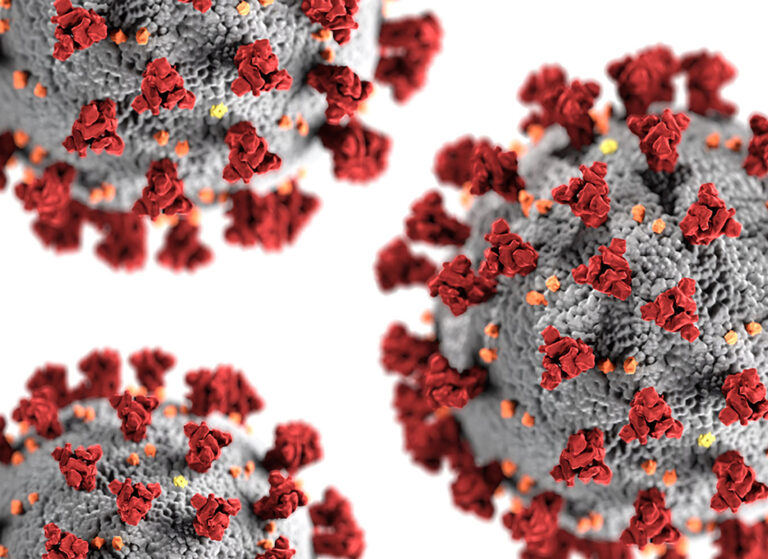COVID in the New Year 2022
Welcome to 2022! We here at CareHive wish you a happy and healthy new year!
Due to the rising number of COVID cases being reported, we understand that things may be starting to feel unsettling once again. With so much information being distributed it can be hard to keep everything straight, so we wanted to take this opportunity to answer some of your questions and help put your mind at ease.
What strain of COVID is causing the increased cases?
The CDC maintains a COVID data tracker to monitor the proportions of variants that are circulating throughout the US. This information can be found here: https://covid.cdc.gov/covid-data-tracker/#variant-proportions. Currently, the Omicron variant makes up 95% of cases, while Delta makes up the other 5%.
Why is the Omicron variant causing more cases?
This is currently under investigation. It’s believed that this variant has inherent properties that innately increase its contagiousness. In addition, it is also thought that there are factors present that allow it to better avoid the body’s immune response, compared to other variants. The exact reasons for both have yet to be determined.
How contagious is Omicron?
At the time of this writing in Austin, Texas, where CareHive HQ is located, the percentage of COVID tests being performed that are returning positive are 30%. By comparison, just one month ago the positivity rate was only around 4%. Omicron is far and away the most contagious strain of COVID we have witnessed since the beginning of the pandemic.
Are the symptoms of Omicron the same as past variants of COVID?
Fortunately, Omicron is causing less severe symptoms than its predecessors, for the most part. It causes symptoms similar to seasonal allergies such as runny nose, sore throat, and fatigue. Unlike previous variants, Omicron does not usually cause a loss of taste or smell.
If the symptoms of Omicron are less severe than other variants, then why is it treated with heightened importance?
While it is good news that most people do not develop moderate or severe symptoms, it ultimately becomes a game of numbers. Because of the sheer volume of people afflicted simultaneously with the disease, there are ramifications across every industry, as this leads to missed days of work and the downstream effects associated with these losses. This has predominantly been showcased across the healthcare industry’s workforce, but the problem affects all parts of society.
What should I do if I have Omicron-like symptoms?
If you have any symptoms of Omicron (or COVID, in general), CareHive recommends getting tested and remaining at home while awaiting the results. Get plenty of rest, use fever-reducing medicine as needed, and hydrate adequately. The PCR test is considered the gold-standard test to detect all variants of COVID, including Omicron. Antigen tests are also useful to detect disease, but they are known to be less sensitive. If either a PCR or antigen test is positive, then you are actively infected with the disease. If you obtain an antigen test that is negative, it is recommended to follow-up this test with a PCR test. If a PCR test is unavailable, then you should obtain another antigen test at least 36 hours from the first antigen test in order to boost the sensitivity of the two tests together. A negative PCR test or two negative antigen tests is considered to be negative for the disease, but always use caution if your symptoms are persistent or severe because it is possible that falsely negative results can occur.
What are my treatment options if I have COVID?
Treatment is determined by several factors, including your general health at baseline, the number of days you’ve had symptoms, and the severity of your illness. Firstly, anyone with severe symptoms, especially if having difficulty breathing or low oxygen levels, should seek medical attention at the hospital. In the hospital, there is access to respiratory support, as well as medications that can be administered through an IV to help treat the disease. The most common medication provided in the hospital is Remdesivir.
Those who experience mild, moderate, or no symptoms can be treated as an outpatient. To determine if a patient is a candidate for one of the two new anti-COVID medications on the market – Paxlovid or Molnupiravir – patients are first monitored for being at high risk for hospitalizations or other complications from COVID. The most common underlying medical problems to put a patient at high risk are a weakened immune system, heart disease, lung disease, or diabetes. The overall list of underlying high-risk medical conditions can be found here from the CDC: https://www.cdc.gov/coronavirus/2019-ncov/need-extra-precautions/people-with-medical-conditions.html. If a patient meets criteria as having a high-risk condition, so long as they are within five days of symptom onset and are not pregnant, they may be a candidate to receive a prescription for one of these medications.
The use of outpatient monoclonal antibodies is also still an option for high-risk individuals, but the caveat is that it must be for the medication Sotrovimab. When Delta was the most common variant causing cases of COVID, another monoclonal antibody formulation called Regeneron was widely in use. Regeneron, though, has not proven to be very effective against Omicron and consequently has fallen out of favor at this time.
What should I know about the two new COVID medications, Paxlovid and Molnupiravir?
Both COVID medications are new on the market and are just now becoming available across the US at both independent pharmacies and national pharmacy chains. Paxlovid and Molnupiravir are being provided under an Emergency Use Authorization (EUA) by the FDA. At this time, they are only advised for the treatment of high-risk individuals who are not pregnant and have had less than five days of symptoms. These medications are not indicated for pre or post-exposure prophylaxis.
Both medications are prescribed as an outpatient for five days duration and are dispensed as oral tablets. Molnupiravir can be provided to all high risk individuals, whereas Paxlovid may not be indicated for people with severe chronic kidney or liver disease. If you are a candidate for outpatient therapy, your healthcare team will work with you to determine which medication is best for your individual needs.
Are vaccines effective against Omicron? If so, who should get vaccinated?
Resoundingly, this answer is yes. Vaccines have been the most important and effective medication to date in mitigating the effects of the original COVID strain as well as all of its variants. The CDC recommends completion of a primary COVID vaccination series for all individuals ages 5 years and older.
What is considered fully vaccinated? Is it two doses? Is it three doses? Is it something else?
At this time, the following is considered by the CDC to be fully vaccinated:
- 2 weeks following the 2nd dose in a 2-dose vaccine series such as Pfizer or Moderna
- 2 weeks following the dose in a 1-dose vaccine such as Johnson & Johnson
This information is subject to change as the CDC has considered altering the definition of fully vaccinated to include an additional dose to the above regimens. To stay informed on the most current CDC recommendations regarding full vaccination status, please review the information here: https://www.cdc.gov/coronavirus/2019-ncov/vaccines/stay-up-to-date.html.
Is there anyone who needs an additional primary dose?
The CDC advises that a third dose be provided to individuals who have moderate-to-severe weakened immune systems. This additional dose to their primary series should be administered as follows:
- Immunocompromised patients who have received 2 doses of the Pfizer COVID vaccine and are 5 years or older should receive an additional dose at 28 days after the 2nd dose of their series
- Immunocompromised patients who have received 2 doses of the Moderna COVID vaccine and are 18 years or older should receive an additional dose at 28 days after the 2nd dose of their series
For the most up-to-date information regarding these recommendations, please review this information provided by the CDC: https://www.cdc.gov/coronavirus/2019-ncov/vaccines/recommendations/immuno.html
Is an additional primary dose the same as a booster? If not, what is a booster and do I need one?
The information above regarding an additional primary dose to the 2-dose vaccines of Pfizer and Moderna are exclusive to those with weakened immunity at baseline. An additional primary dose for these individuals effectively converts the primary series from a 2-dose to a 3-dose regimen in which all doses are administered within a relatively short amount of time apart from one another. Boosters are slightly different though they achieve the same purpose of bolstering a patient’s immunity against COVID.
By definition, completion of the primary series of the COVID vaccine creates active immunity against COVID and its variants. With time, though, research into each vaccine has shown that this immunity decreases. Because of this loss of protection, booster doses are subsequent administrations of the vaccine given several months after completion of the primary series. This is designed to create another spike in circulating immunity within the body. The individual recommendations by the CDC regarding boosters are gathered from information provided by the different COVID vaccine manufacturers. At this time, a booster dose is advised as follows:
- Patients who have received 2 doses of the Pfizer COVID vaccine and are 16 years or older should receive a booster dose 5 months after the 2nd dose of their series
- Patients who have received 2 doses of the Moderna COVID vaccine and are 18 years or older should receive a booster dose 6 months after the 2nd dose of their series
- Patients who received the Johnson & Johnson COVID vaccine and are 18 years or older should receive a booster dose 2 months after receiving their primary dose
Recommendations regarding booster doses are subject to change, so please review the most up-to-date information from the CDC regarding booster vaccination schedules here: https://www.cdc.gov/coronavirus/2019-ncov/vaccines/booster-shot.html
Is there anything else I should be aware of?
We know this is a lot of information to digest. At CareHive, our vision is to perfect the convenience and clarity of healthcare. We understand that it is quite difficult for patients to keep up with ever-changing guidelines regarding COVID, as well as any number of medical conditions. Using a personalized, data-driven approach, we utilize a suite of digital healthcare products and services to focus on your individual needs. Whether it is the use of intelligent asynchronous navigation tools with built-in escalation pathways or in-person on-demand use of telemedicine services, CareHive is here to partner with you to offer a full-service solution to meet all of your needs.
2022 may have started with many of us feeling a bit of uncertainty, but by leveraging the power of data, science, and technology, together we can come out on top stronger, healthier, and more resilient than ever!
Suneet Singh, MD, FACEP // Medical Director, CareHive // Assistant Professor of Surgery & Perioperative Care, University of Texas at Austin Dell Medical School






